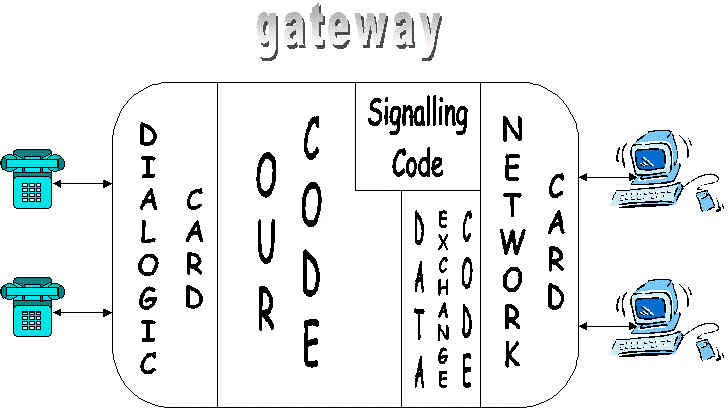

Initially, we selected this particular aspect of the project because it sounded technically interesting. The following is the project description from the web:
The gateway is connected to eight telephone lines and an Ethernet. In the data plane, it has to take voice samples arriving from the telephone network and place them in IP packets, and vice versa. This has to be done with great care, because the gateway should introduce as little delay as possible. Thus, transmission both of voice samples and of IP packets should be carefully scheduled. This team will be responsible for completely understanding and programming the data paths in the Dialogic gateway card. The team should also allow data flow for multi-point telephone calls (i.e. bridged conference calls).
You should cooperate with the data team (team 1) for defining the network data format. The normal connections through the gateway are bi-directional connections with one phone line on one end and an IP address at the other. Multi-point connections can have zero or more desktop machines participating and there can be zero or more phone lines associated with such a connection.
You must implement the functionality at least using the basic dx_ calls to the D/41E board. When that is complete, you may go on to try using IPLink which implements in hardware sending and receiving IP packets containing the voice samples. The Dialogic boards have been installed in the vada computer in the Systems Lab.
Basically, we needed to write code that uses the Dialogic card to establish connections between phone lines and computers. This involves taking the digitized data from the Dialogic card and giving it to Data Exchange to send over the network, and vice versa. It also involves detecting various conditions such as DTMF tones (caller pressing a phone button), and notifying Signaling.